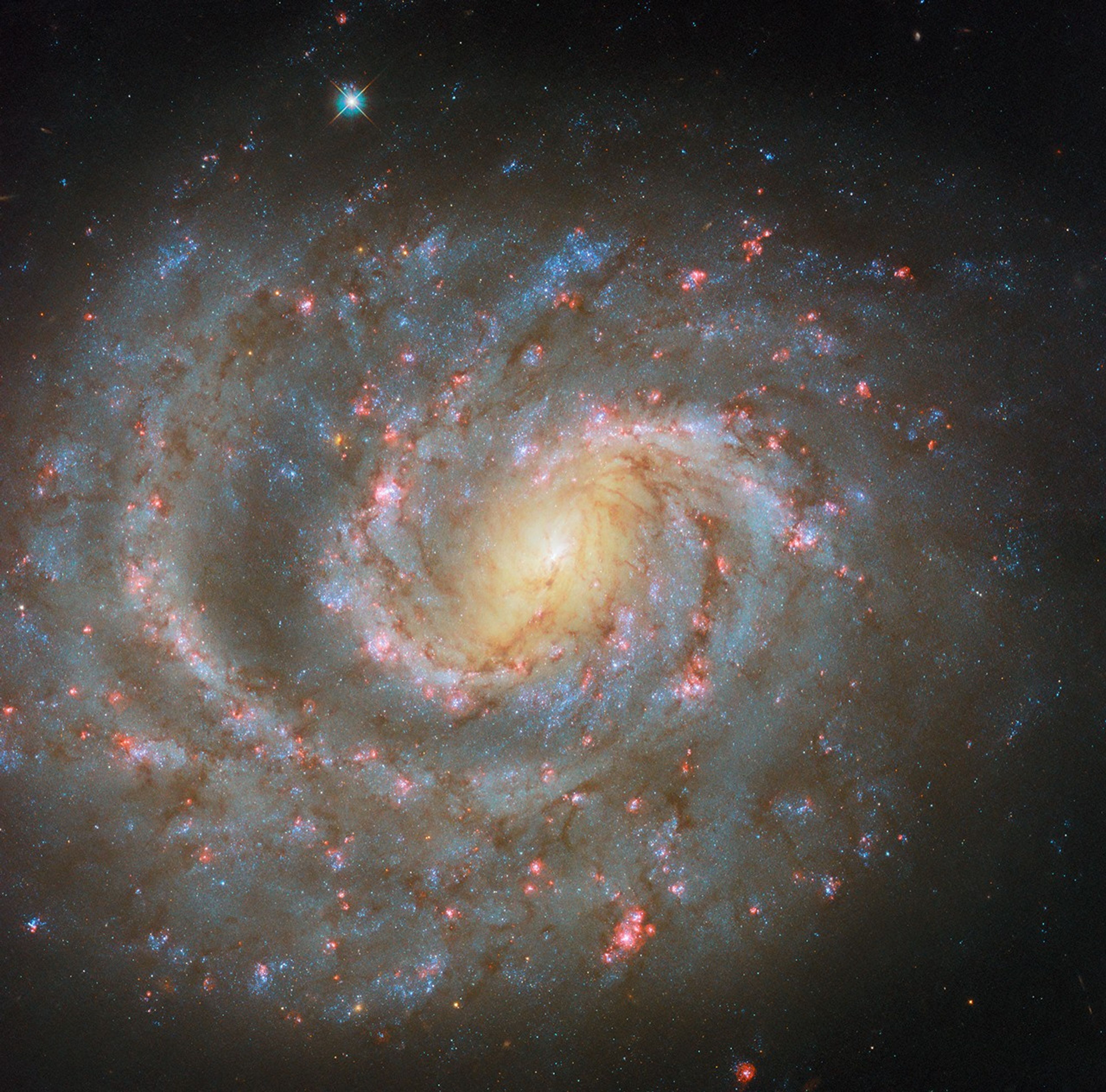Hubble Space Telescope Home Hubble Spots a Spiral in the… Hubble Space Telescope Hubble Home Overview About Hubble The History of Hubble Hubble Timeline Why Have a Telescope in Space? Hubble by the Numbers At the Museum FAQs Impact & Benefits Hubble’s Impact & Benefits Science Impacts Cultural Impact Technology Benefits Impact on Human Spaceflight Astro Community Impacts Science Hubble Science Science Themes Science Highlights Science Behind Discoveries Hubble’s Partners in Science Universe Uncovered Explore the Night Sky Observatory Hubble Observatory Hubble Design Mission Operations Missions to Hubble Hubble vs Webb Team Hubble Team Career Aspirations Hubble Astronauts News Hubble News Hubble News Archive Social Media Media Resources Multimedia Multimedia Images Videos Sonifications Podcasts E-books Online Activities Lithographs Fact Sheets Glossary Posters Hubble on the NASA App More 35th Anniversary 2 min read
Hubble Spots a Spiral in the Celestial River  This NASA/ESA Hubble Space Telescope image features the spiral galaxy NGC 1637. ESA/Hubble & NASA, D. Thilker The subject of this NASA/ESA Hubble Space Telescope image is NGC 1637, a spiral galaxy located 38 million light-years from Earth in the constellation Eridanus, the River.
This NASA/ESA Hubble Space Telescope image features the spiral galaxy NGC 1637. ESA/Hubble & NASA, D. Thilker The subject of this NASA/ESA Hubble Space Telescope image is NGC 1637, a spiral galaxy located 38 million light-years from Earth in the constellation Eridanus, the River.
This image comes from an observing program dedicated to studying star formation in nearby galaxies. Stars form in cold, dusty gas clouds that collapse under their own gravity. As young stars grow, they heat their nurseries through starlight, winds, and powerful outflows. Together, these factors play a role in controlling the rate at which future generations of stars form.
NGC 1637 holds evidence of star formation scattered throughout its disk, if you know where to look. The galaxy’s spiral arms have pockets of pink clouds, many with bright blue stars. The pinkish color comes from hydrogen atoms excited by ultraviolet light from young, massive stars forming within the clouds. This contrasts with the warm yellow glow of the galaxy’s center, which is home to a densely packed collection of older, redder stars.
The stars that set their cloudy birthplaces aglow are comparatively short-lived, and many of these stars will explode as supernovae just a few million years after they’re born. In 1999, NGC 1637 played host to a supernova named SN 1999EM, lauded as the brightest supernova seen that year. When a massive star expires as a supernova, the explosion outshines its entire home galaxy for a short time. While a supernova marks the end of a star’s life, it can also jump start the formation of new stars by compressing nearby clouds of gas, beginning the stellar lifecycle anew.
Explore More
Hubble’s Galaxies
Homing in on Cosmic Explosions
Hubble Focus E-Book: Galaxies through Space and Time
Facebook logo @NASAHubble @NASAHubble Instagram logo @NASAHubble Media Contact:
Claire Andreoli (claire.andreoli@nasa.gov)
NASA’s Goddard Space Flight Center, Greenbelt, MD
Details Last Updated Dec 05, 2024 Editor Andrea Gianopoulos Location NASA Goddard Space Flight Center Related Terms Galaxies Goddard Space Flight Center Hubble Space Telescope Spiral Galaxies Stars Supernovae


